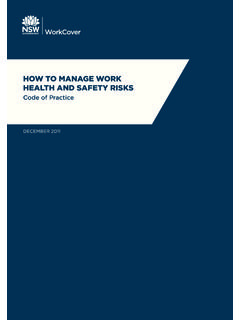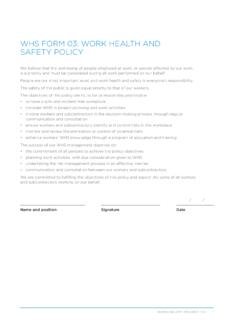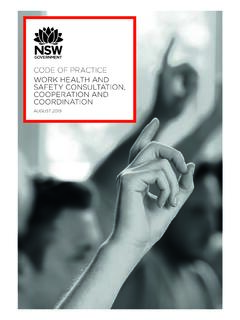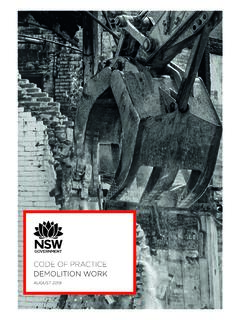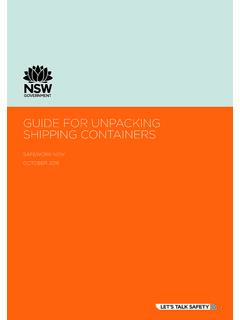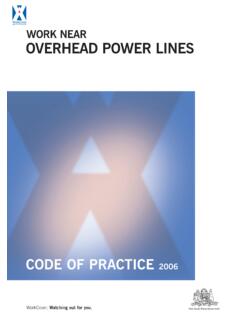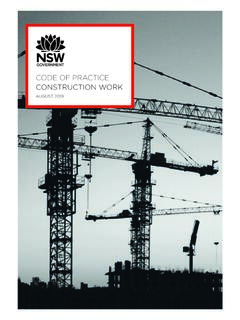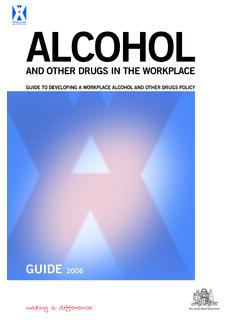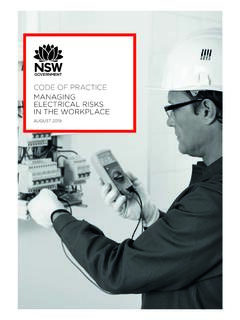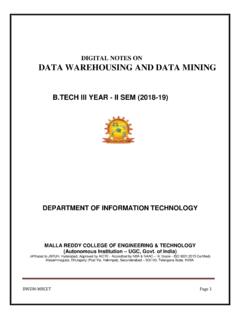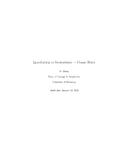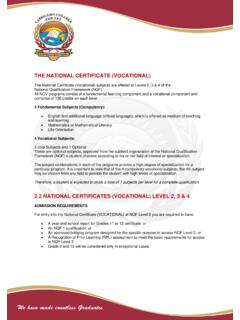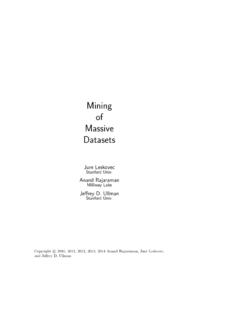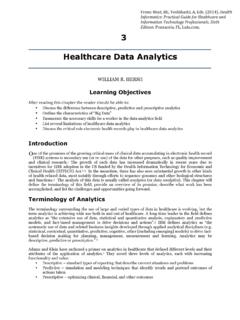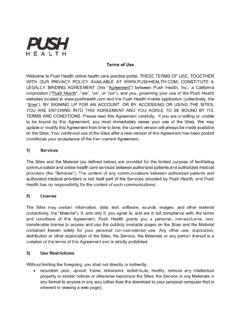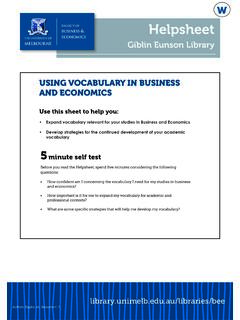Transcription of CODE OF PRACTICE - SafeWork NSW
1 CODE OF PRACTICEMANAGING PSYCHOSOCIAL HAZARDS AT WORKSAFEWORK NSWM AY 2 02 1 This Code of PRACTICE has been developed by SafeWork NSW and has been approved under section 274 of the NSW Work Health and Safety Act 2011. The code commenced on the date of gazettal on 28th May 2021. ISBN 978-0-642-33297-4 [PDF] ISBN 978-0-642-33298-1 [RTF]Copyright Information State of New South Wales You may copy, distribute, display, download and otherwise freely deal with this publication for any purpose provided that you attribute the Department of Customer Service as the owner. This publication is licensed under the Creative Commons Attribution licence. For more information, visit 4 Scope and application 4 How to use this Code of PRACTICE and key terms 41. Introduction What are the common psychosocial hazards at work?
2 Individual factors 92. Who has duties to manage psychosocial hazards at work? Persons conducting a business or undertaking 10 Primary duty of care 10 Duty to consult workers 11 Multiple duty holders 11 Duties cannot be transferred An Officer of a PCBU Workers of the PCBU Other persons at the workplace 143. What is involved in managing psychosocial hazards at work? Essential elements of an effective systematic risk management process 15 Leadership and management commitment 15 Consulting workers 15 Consulting those in your supply chains 16 Adequate planning Step One: Identify the psychosocial hazards 16 Systematically collecting and reviewing available information and data 17 Observe and talk to workers about work activities Step Two: Assess and prioritise the psychosocial hazards and risks 20 Determine the psychosocial risk Step Three.
3 Control psychosocial hazards and risks 21 Eliminate or minimise risk through good work design 21 Safe systems of work 21 Information, training, instruction or supervision 22 Reasonable adjustments for individual workers 22 Controlling residual risks 22 Implementing controls Step Four: Proactively implement, maintain, monitor and review the effectiveness of controls 234. Responding to a report of a psychosocial risk or incident Investigating a psychosocial incident 24 Notifiable incident Keeping a record of the risk management process and outcomes 255. Supporting a safe return to work after a work-related harm 26 Appendices 27 Appendix A. Example scenarios for managing psychosocial hazards and risks at work 28 Scenario 1.
4 Health Care 28 Scenario 2. School 29 Scenario 3. Government call centre 30 Scenario 4. Construction company 31 Scenario 5. Small consulting firm 32 Scenario 6. Retail store 33 Scenario 7. Private health care provider 34 Scenario 8. Manufacturing business 35 Scenario 9. Very small trucking company 36 Scenario 10. mining workplace 37 Appendix B. Example of a Risk Register 384 SafeWork NSWFOREWORDThis code of PRACTICE on how to manage psychosocial hazards at work is an approved code of PRACTICE under section 274 of the New South Wales Work Health and Safety Act 2011 (WHS Act). An approved code of PRACTICE provides practical guidance on how to achieve compliance with the work health and safety standards required under the WHS Act and the Work Health and Safety Regulation (WHS Regulation), including effective ways to identify and manage code of PRACTICE applies to anyone who has a duty of care in the circumstances described in the code of PRACTICE .
5 In most cases, following an approved code of PRACTICE will assist the duty holder in achieving compliance with the health and safety duties in the WHS Act and WHS Regulation concerning the code s subject matter. Like regulations, codes of PRACTICE tend to deal with particular risks, and do not cover all hazards or risks that may arise. The health and safety duties require duty holders to consider all risks associated with work, not only those for which regulations and codes of PRACTICE of PRACTICE are admissible in court proceedings under the WHS Act and the WHS Regulation. Courts may regard a code of PRACTICE as evidence of what is known about a hazard, risk or control and may rely on the code in determining what is reasonably practicable in the circumstances to which the code relates. For further information, see Safe Work Australia How to determine what is reasonably practicable to meet a Health and Safety with the WHS Act and WHS Regulation may be achieved by following another method if this achieves an equivalent or higher standard of safety than set out in this code.
6 An inspector may refer to an approved code of PRACTICE when issuing an improvement or prohibition AND APPLICATIONThis code is intended to be read by persons conducting a business or undertaking (PCBU) and those who have duties under the WHS Act. It provides practical guidance on the process a PCBU could use to identify and to manage psychosocial hazards at work. You should use this code of PRACTICE if you have functions or responsibilities that involve managing, so far as is reasonably practicable, exposure to psychosocial hazards and risks to psychological and physical health and safety at work. The code may also be a useful reference for other persons interested in complying with the duties under the WHS Act and WHS Regulation. Examples in this code identify actions a PCBU, an officer of a PCBU, a worker, or other persons should take, but which by themselves may not be sufficient to fulfil a PCBU s obligations or a worker s or other person s responsibility under WHS code applies to all work and workplaces covered by the WHS Act.
7 Throughout this code, the reasonably practicable limitation under section 18 of the WHS Act applies to the general duty. HOW TO USE THIS CODE OF PRACTICE AND KEY TERMSThis code includes references to requirements under the WHS Act and WHS Regulation. These are included for convenience only and should not be relied on in place of the full text of the WHS Act or WHS Regulation. Codes of PRACTICE do not create new WHS duties, nor do they extend any existing duties, but rather explain how to meet those duties. The words must or require indicates that a legal requirement exists and must be met, should indicates a recommended course of action, and may an optional course of action. This code s advice covers the prevention of exposure to psychosocial hazards at work, which may create psychological or physical health and safety risks. 5 CODE OF PRACTICE MANAGING PSYCHOSOCIAL HAZARDS AT WORKA duty holder means any person who owes a duty under the WHS Act, including a PCBU with management and control of a business, or a designer, manufacturer, importer, supplier, installer of products or plant used at work (upstream duty holder), or officer or a worker means any person who carries out work for a PCBU, including work as an employee, contractor or subcontractor (or their employee), self-employed person, outworker, apprentice or trainee, work experience student, an employee of a labour-hire company placed with a host PCBU , or a volunteer.
8 Managers and supervisors are also PCBU also owes a duty of care to persons other than their workers whose health or safety may be put at risk that is, to any person who may be affected by the business operations such as visitors, customers or members of the workplace means any place where work is carried out for a business or undertaking, or where a worker goes, or is likely to be, while at health and safety (WHS) hazards are anything that can cause harm. Risk means the possibility of harm (death, injury or illness) which might occur if a worker is exposed to a hazard. Control measures (controls) are actions taken to eliminate or minimise WHS hazards and NSW1. INTRODUCTIONThe WHS Act defines health as including both physical and psychological health. A PCBU has a primary duty to ensure, so far as is reasonably practicable, the health and safety of workers and also to ensure that other persons are not put at risk from work carried out arising from the business or psychosocial hazards and risks at work are not effectively managed, this may increase the risk of work-related psychological and physical injuries, incidents and errors.
9 Therefore, it may be helpful when assessing the risk of musculoskeletal and traumatic injury to consider the psychosocial hazards and risks and controls noted in the a systematic process to manage psychosocial hazards and risks will help the PCBU and duty holder meet their WHS responsibilities. It will also decrease organisational disruptions and costs resulting from work-related harm and may improve WHS and broader organisational performance and WHAT ARE THE COMMON PSYCHOSOCIAL HAZARDS AT WO R K ?Psychosocial hazards at work are aspects of work and situations that may cause a stress response which in turn can lead to psychological or physical harm. These stem from: the way the tasks or job are designed, organised, managed and supervised tasks or jobs where there are inherent psychosocial hazards and risks the equipment, working environment or requirements to undertake duties in physically hazardous environments, and social factors at work, workplace relationships and social hazards and the appropriate controls will vary for every workplace and sometimes between groups of workers depending on the.
10 Organisational context to work ( economic pressures, type and size of the business, organisational structure and culture, environmental conditions, technologies, and business activities, products and services, supply chains and contractual arrangements, workers skills and attributes and workplace relationships) and content of the work (workload, workers roles, responsibilities and activities required to deliver the product or service).Some hazards by themselves have the potential to cause serious harm, such as experiencing occupational violence. In most circumstances, hazards will not occur alone but together with a range of psychosocial and physical hazards. As part of the risk assessment process the frequency and duration of exposure to psychosocial hazards will need to be considered. The more psychosocial hazards that are present, the more likely there is for harm to occur.
